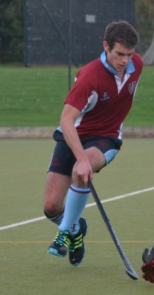David Perry
About Me:
I graduated from the University of Warwick in 2012 with a 1st class masters in Mathematics. My main academic interests in the latter 2 years of my course were in applied mathematics and mathematical biology and this saw me apply for the MOAC doctoral training program with the aim to utilise my mathematical background and apply it to new research areas. During my undergraduate degree I completed a 4th year Maths in Action project on optimal vaccination strategies.
I am currently a second year MOAC student after successfully completing my MSc. in Mathematical Biology and Biophysical Chemistry with a distinction. My supervisors for my PhD. are Professor Patrick Unwin and Professor Bruno Frenguelli where we are using SICM to look at PC12 cells.
Education:
2008-2012: MMath, The University of Warwick, 1st Class
2012-2013 : Mathematical Biology and Biophysical Chemistry, MOAC, The University of Warwick
2013- : PhD. in Mathematical Biology and Biophysical Chemistry with Professor Patrick Unwin, The University of Warwick
Current Research:
The Scanning Ion Conductance Microscope (SICM) is a powerful tool for non contact, solution phase, topographical imaging of soft and living samples. SICM utilises an electrolyte filled nanopipette positioned above a substrate bathed in electrolyte. A bias is tradtitionally applied between an electrode in the nanopipette and one in bulk solution to generate an ionic current. Upon approaching a substrate the access resistance increases resulting in a drop of the ionic current and this can be used for probe positioning and hence for topographical mapping. Typically an oscillation is applied to the SICM probe to generate an AC feedback signal which increases upon approach to a substrate due to a change in the conductance and the heights away from and close to the surface. This approach is termed distance modulated (DM-) SICM and is more stable than just using the ionic current as feedback which is susceptible to drift.
Bias Modulated SICM
So far in my PhD. I have implemented a new mode of SICM feedback whereby the bias is oscillated about 0 V in order to generate an AC current signal. It has been shown that this signal is sensitive to changes in resistance upon approaching the sample and provides a new feedback for probe positioning. It has advantages such as not requiring a physical oscillation of the tip which can lead to local convection and eliminates any polarity and bias dependent effects that would be present in more traditional approaches.
SICM as a tool for charge mapping
Initially using DM-SICM and later using BM-SICM we have shown that SICM is inherently sensitive to the surface charge present on the substrate being probed and on the nanopipette surface charge when a fixed bias is applied. Utilising Bias modulated (BM-) SICM it is possible to minimiser convolution of surface charge through approaching a substrate with zero mean bias before then applying a potential to gain information about the surface charge.
Crystal Growth in a Nanopipette
Because of their scale, nanopipettes provide a powerful tool for investigating nanopprecipation events using the nanopipette as a reaction centre for the precipitation event. Through applying a bias across the end of a nanopipette it is possible to drive together two ions which together will precipitate out of solution leading to a blocking of the probe and change of the conductance. The current response therefore provides information about the level of crystallisation at the end of the pipette.
SICM mapping of Cells.
SICM allows for the imaging in a non contact mannor which makes it a powerful tool for investigating living samples without interference. Using BM-SICM I am interested in exploring living systems, with the main focus of my project looking at PC12 cells which are an immortal cell line that can be stimulated to behave in a similar manor to neurons.
Publications:
(1) Bias Modulated Scanning Ion Conductance Microscopy
Kim McKelvey, David Perry, Joshua C Byers, Alex W. Colburn, and Patrick R. Unwin, Anal. Chem, 2014, 86, 3639−3646.
(2) Surface Charge Mapping With a Nanopipette
Kim McKelvey, Sophie L. Kinnear, David Perry, Dmitry Momotenko, and Patrick R. Unwin, J. Am. Chem. Soc., 2014, 136 (39), pp 13735–13744
(3) Simultaneous Nanoscale Surface Charge and Topographical Mapping.
David Perry, Rehab Al Botros, Dmitry Momotenko, Sophie L. Kinnear, and Patrick R. Unwin, ACS Nano, 2015, 9 (7), pp 7266–7276
(4) Nucleation and Aggregative Growth of Palladium Nanoparticles on Carbon Electrodes: Experiment and Kinetic Model
Yang-Rae Kim, Stanley C. S. Lai, Kim McKelvey, Guohui Zhang, David Perry, Thomas S. Miller, and Patrick R. Unwin, J. Phys. Chem. C, 2015, 119 (30), pp 17389–17397
(5) Time-Resolved Detection and Analysis of Single Nanoparticle Electrocatalytic Impacts
Minkyung Kang, David Perry, Yang-Rae Kim, Alex W. Colburn, Robert A. Lazenby, and Patrick R. Unwin, J. Am. Chem. Soc., 2015, 137 (34), pp 10902–10905
(6) Single molecule electrochemical detection in aqueous solutions and ionic liquids
Joshua C Byers, Binoy Paulose Nadappuram, David Perry, Kim McKelvey, Alex W Colburn and Patrick R Unwin, Anal. Chem, 2015, 87 (20), pp 10450–10456
(7) Surface Charge Visualization at Viable Living Cells
David Perry, Binoy Paulose Nadappuram, Dmitry Momotenko, Philip D. Voyias, Ashley Page, Gyanendra Tripathi, Bruno G. Frenguelli∥, and Patrick R. Unwin, J. Am. Chem. Soc., 2016, 138 (9), pp 3152–3160
(8) Characterization of nanopipettes
David Perry, Dmitry Momotenko, Robert A Lazenby, Minkyung Kang, Patrick R Unwin, Anal. Chem., 2016, 88 (10), pp 5523–5530

Contact Details
David Perry
MOAC DTC
Top Floor, Senate House
University of Warwick
CV4 7AL
Email: d.j.perry@warwick.ac.uk

